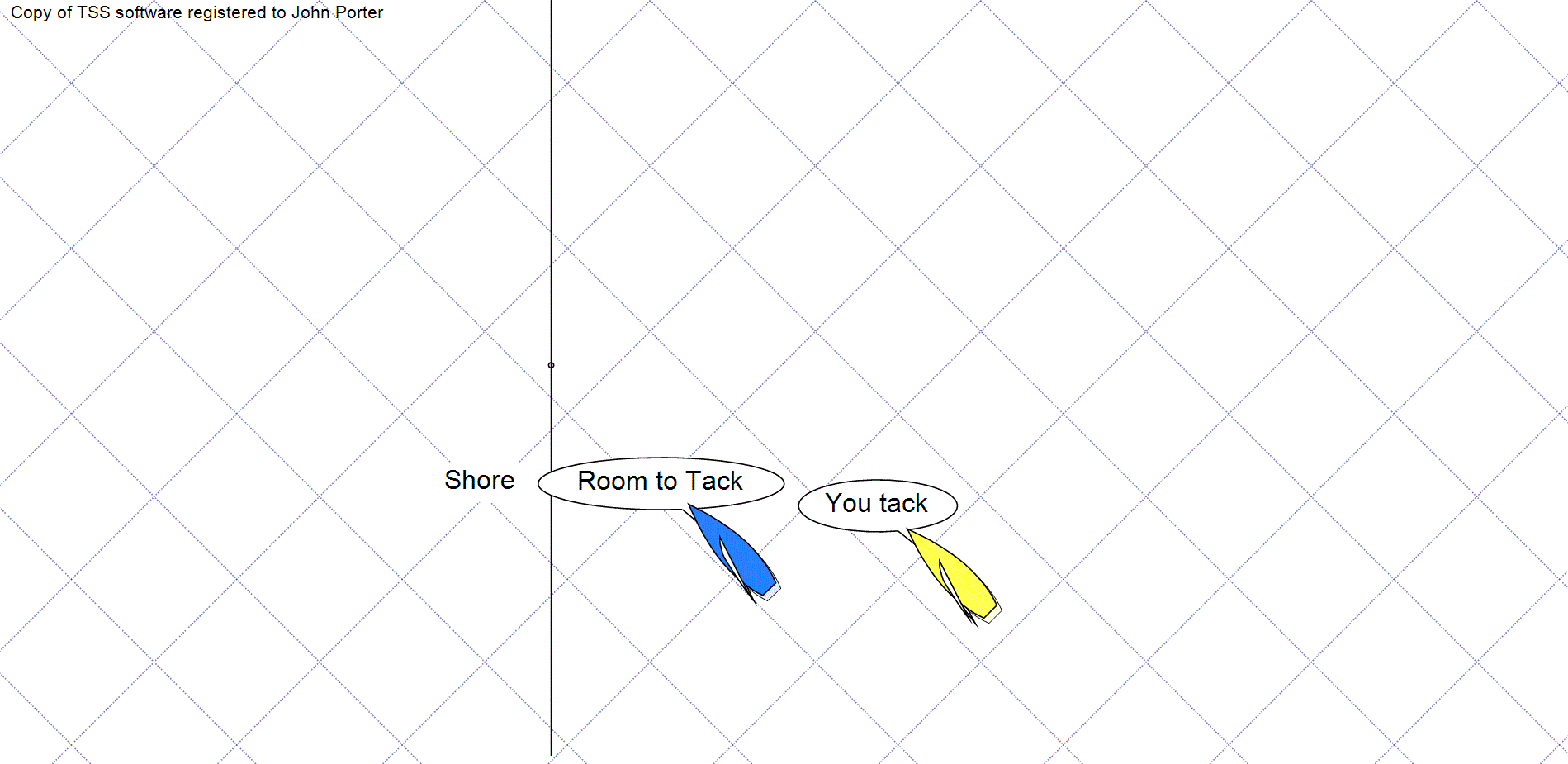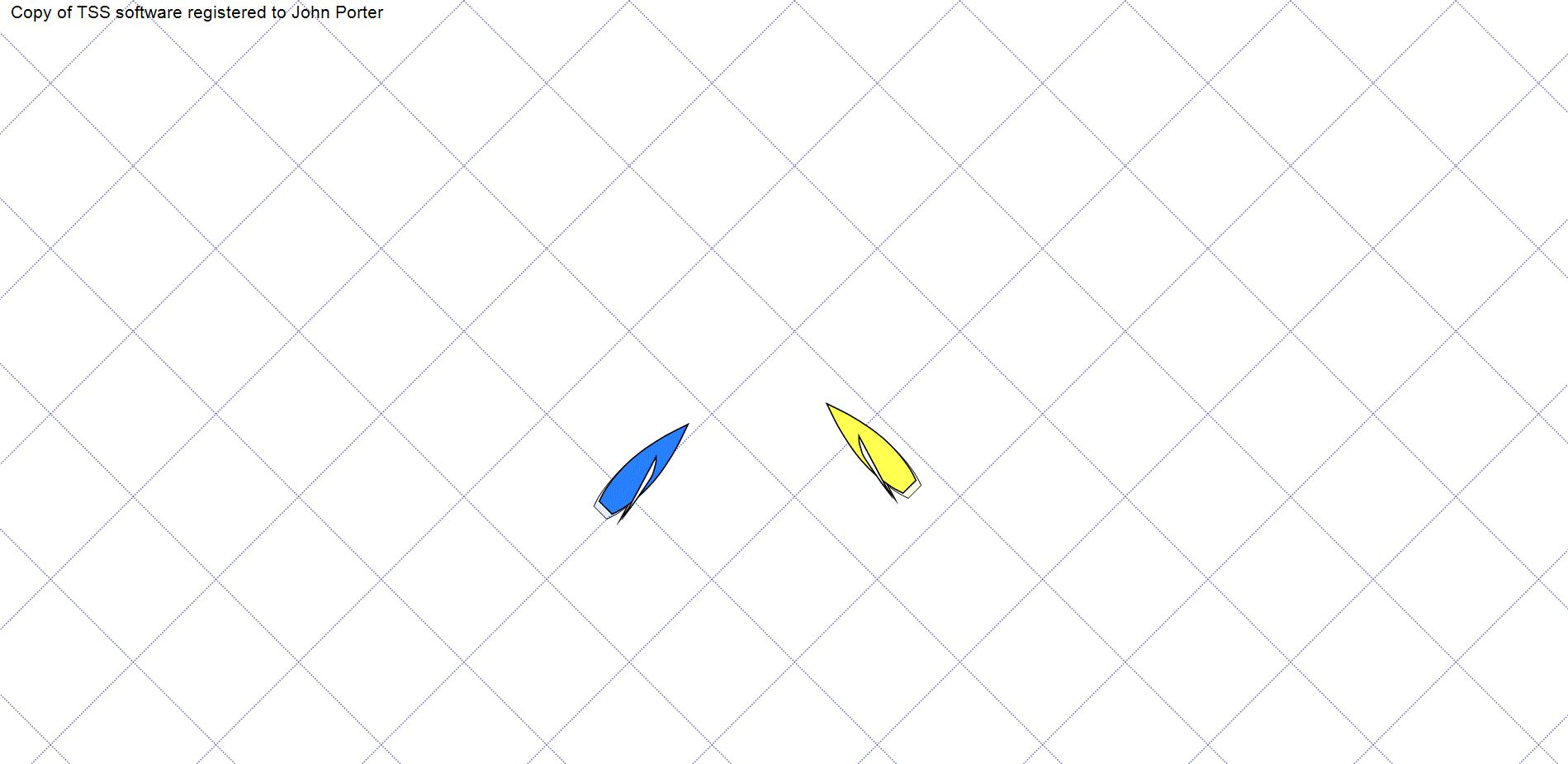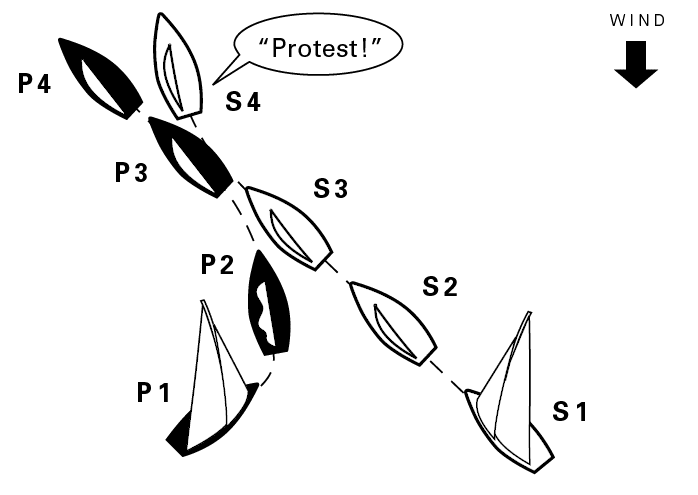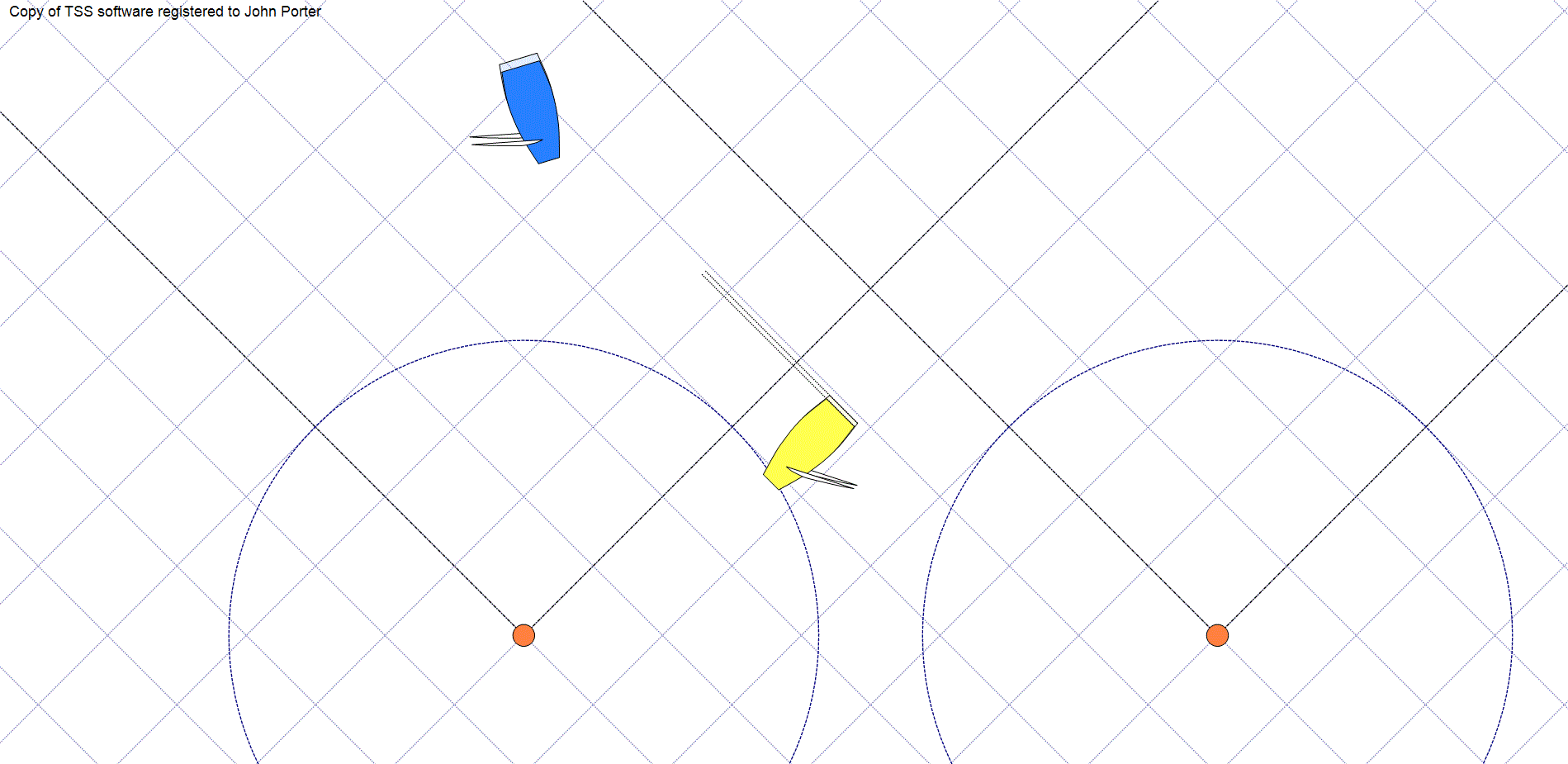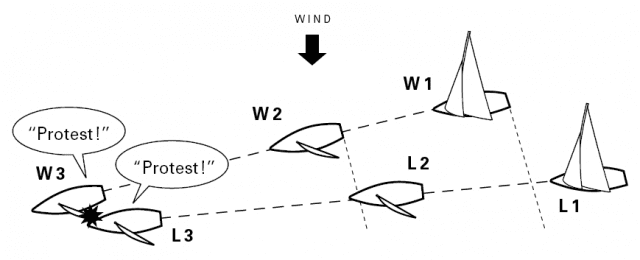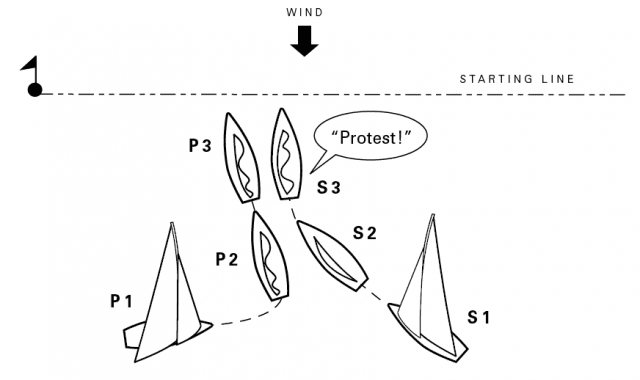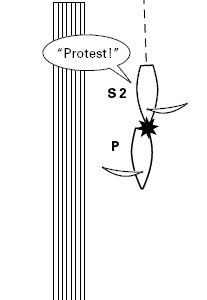Each week this season, we will offer a “quiz” question regarding the Racing Rules of Sailing. Read the scenario below, formulate your answer, then move your mouse over the box to reveal the correct answer.
Need further explanation?
something we can discuss on the porch on Sunday.
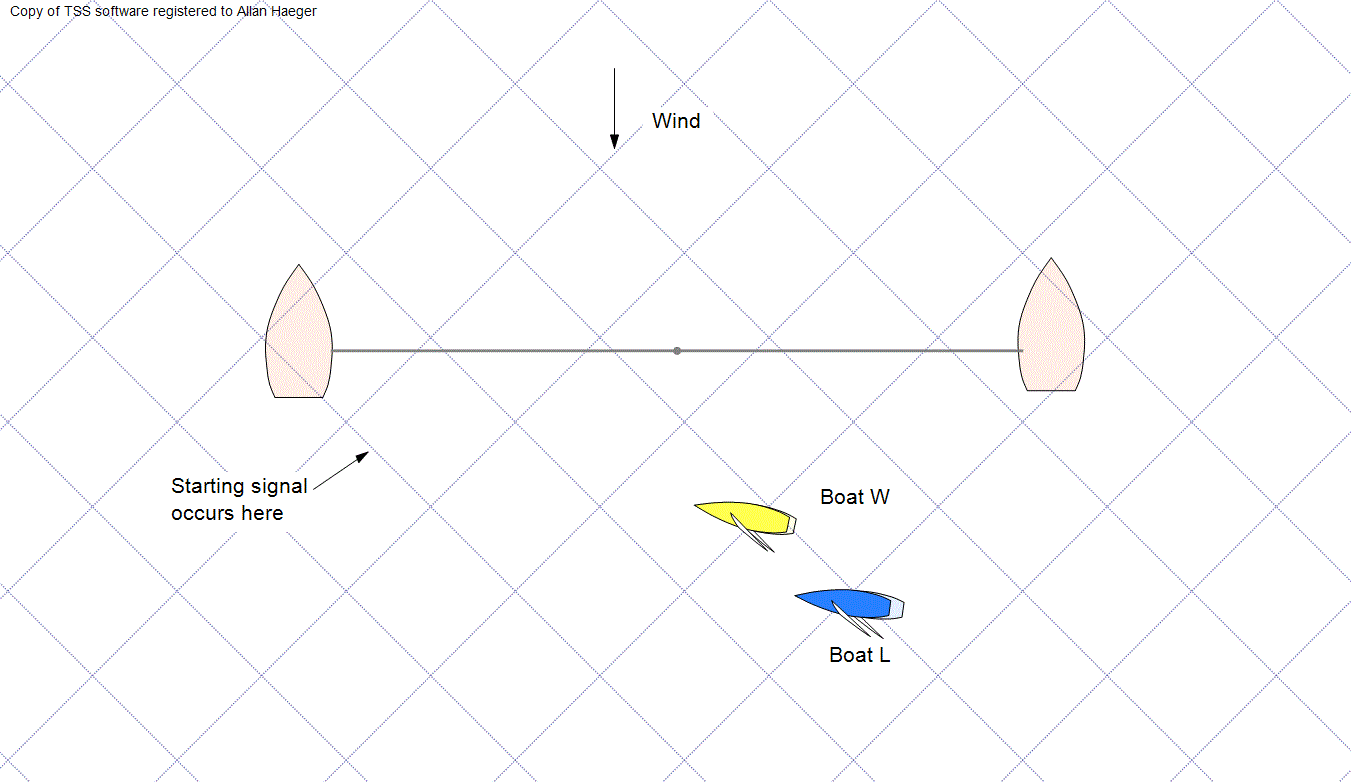
This Week's Question
Two boats, L (a leeward boat) and W (a windward boat), are approaching the left-hand end of the starting line, which is a 16-foot powerboat. When W is three lengths from the end of the line, L becomes overlapped on W to leeward from clear astern. There are six seconds to go before the starting signal. L slowly luffs and W keeps clear. As L reaches close-hauled, the starting signal is made. L is a boat length from the powerboat and will not clear it sailing close-hauled. She luffs to head to wind, shooting up and around the powerboat, and then bears away to a close-hauled course. W keeps clear throughout, and protests L for sailing above close-hauled after the starting signal. You are on the protest committee; which boat should be penalized? (From Perry, Quiz 25)
Answer
Boat W’s protest is disallowed. The 16-foot powerboat ranks as both a “mark” and an “obstruction” to the 18-foot sailboats (see the definitions Mark and Obstruction). The preamble to Section C, At Marks and Obstructions, states that the rules of Section C, which include rule 18, Mark-Room, and rule 19, Room to Pass an Obstruction, do not apply “at a starting mark surrounded by navigable water.” Therefore, the situation is governed by the rules of Sections A and B. L becomes overlapped to leeward from clear astern of W. Therefore, rule 17, On the Same Tack; Proper Course, requires her to not sail above her proper course. Before the starting signal L has no proper course (see the definition Proper Course); therefore, she is free to sail up to head to wind, provided that when she changes course she gives W room to keep clear (rule 16.1, Changing Course). After the starting signal, L is required to not sail above her proper course. In this case her “proper course” (the course she would sail to finish as soon as possible) is to luff head to wind, coast past the powerboat and then bear away to a close-hauled course (see the definition Proper Course). L sails no higher than this course, and therefore does not break rule 17; and while she is changing course, L gives W room to keep clear under rule 16 .1 as demonstrated by W’s performance. W correctly keeps clear under rule 11, On the Same Tack, Overlapped
This quiz was borrowed from the Inland Lake Yachting Association‘s #FairSailing initiative
Learn more at sailzing.com
Excerpted from Dave Perry’s100 Best Racing Rules Quizzes, available from US Sailing. For a comprehensive explanation of the rules, read Dave Perry’s Understanding the Racing Rules of Sailing through 2024, which is also available from US Sailing.

